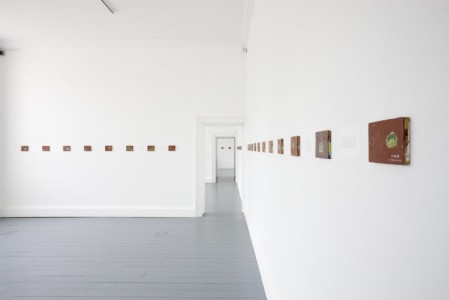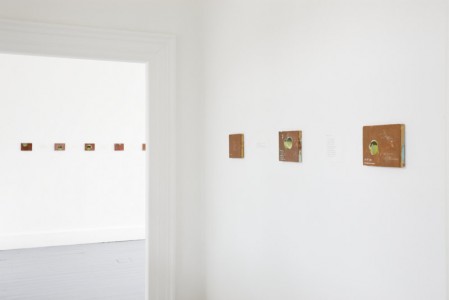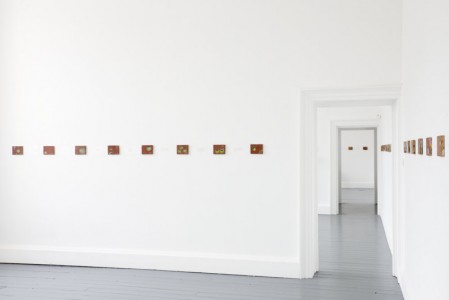Irish Museum of Modern Art
February 26 – May 23, 2010

The exhibition comprising a series of 111 small-scale paintings by the Belgian-born artist Francis Alÿs, one of the most original artists working today. Francis Alÿs: Le temps du sommeil has been described as a storyboard or archive of Alÿs’s highly imaginative oeuvre, much of which takes as its starting point simple actions performed by the artist and documented in photographs, film or by other means such as postcards. These actions, involving strange objects and fruitless exercises, frequently suggest the dreamlike state of the exhibition’s title, which could translate as “sleep time”. They are also incorporated into the exhibition in the form of accompanying texts, many derived from the artist’s postcards.
Le temps du sommeil was begun in 1995 and continues today as an ongoing body of work. The technique is consistent throughout. The figures or other images in the paintings begin as drawings on tracing paper, which are then transferred onto a miniature oval landscape with golden green grass and a darkened, olive green sky. In each case this scene is surrounded by a rich Venetian red ground, built up in layers with the whole measuring no more than 11.5 by 15 cms. Alÿs compares the oval with the veduta of early Italian Renaissance paintings, a special distant scene inserted into a larger landscape. Each painting is dated with a rubber stamp, underlining the narrative aspect of the series and providing a kind of diary of the artist’s fantasies and obsessions.
Several of the paintings have an obvious connection with Alÿs’s recorded actions. The man walking along carrying a leaking can of paint, echoes the artist’s 1995 action The Leak, in which he roamed the streets of Ghent with a punctured paint can leaving a trail back to the gallery, where he mounted the empty can on the wall. Another painting calls to mind Alÿs’s epic 2002 project, When Faith Moves Mountains, which took place near the Peruvian capital Lima. This involved 500 volunteers who, armed only with shovels, moved a 1,600-foot sand dune just four inches from its original location. The change in the landscape was minute, but Alÿs ‘s concern was with its relationship to the prevailing social and political situation at once “futile and heroic, absurd and urgent”.

In 2004 the artist described the place of painting in his work: “What justifies my recourse to painting is that it’s the shortest way – or the only way – to translate certain scenarios or situations that cannot be said, that cannot be filmed or performed. It’s about entering a situation that could not exist elsewhere, only on the paper or canvas. They are images, and I want for them to live as such. Like in a children’s book.” In June of this year the series will travel to Tate Modern, London, as part of a retrospective of Alÿs’s key works, which will also be shown at Wiels, Brussels, and at MoMA, New York.

Born in Antwerp, Belgium, in 1959, Francis Alÿs studied architecture at the Institut d’Architecture de Tournai in Belgium and at the Instituto Universitario di Architettura in Venice. Since 1986 he has made his home in Mexico and has been particularly associated with Mexico City’s historic centre where his studio is located. His work has been extensively shown worldwide, recent exhibitions include in 2009 – Shanghai Art Museum; The National Museum of Modern Art, Tokyo, and Centro Galego de Arte Contemporánea, Santiago de Compostela; in 2008 – KW Institute for Contemporary Art, Berlin; San Francisco Museum of Modern Art; Kiasma Museum of Contemporary Art, Helsinki, and Istanbul Museum of Modern Art. As Alÿs’s international reputation has grown many of his projects have taken place at the invitation of museums, for example, The Modern Procession, created in 2002, to mark the temprorary move of The Museum of Modern Art, New York, from Manhattan to Queens.